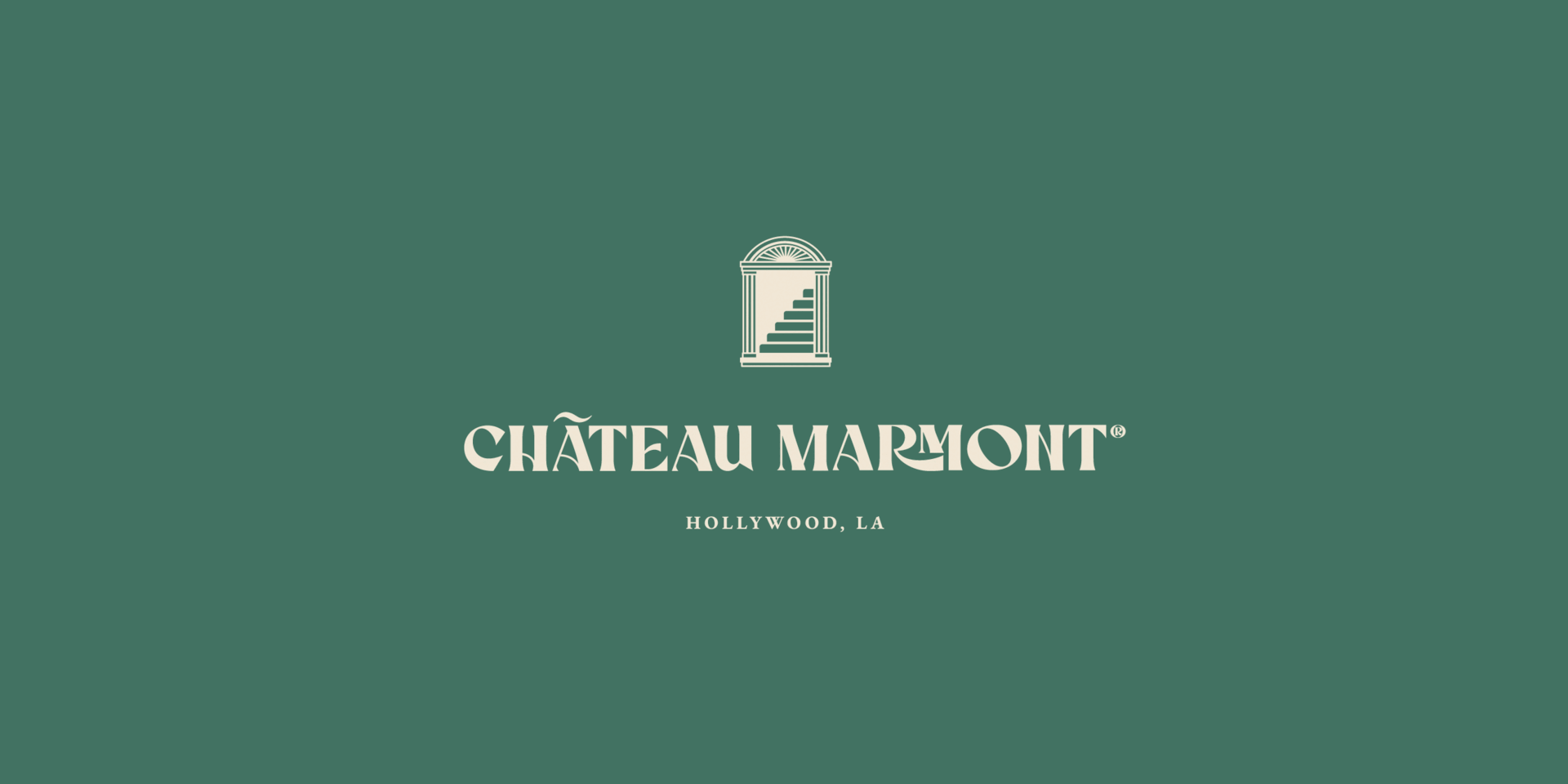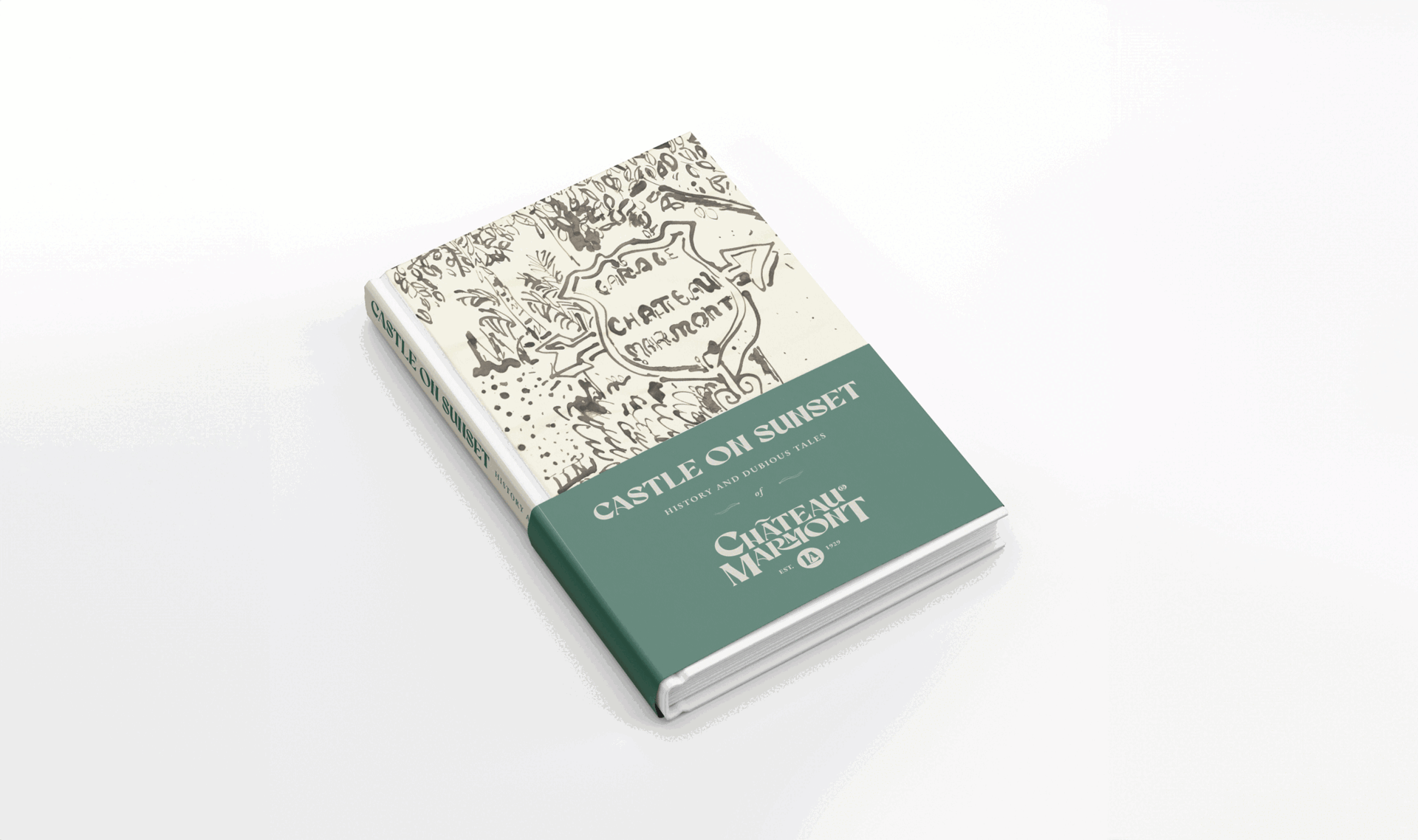Chateau Marmont
Identity
Experience Design
In 1920, in an onion field on a rise above a horse trail called Sunset Boulevard, Fred Horowitz envisioned a Castle, and built it. In 1992, after decades of crises and decay, hotelier Andre Balazs bought it. Charmed by its “Authentic Fauxness”, he saw discretion as Chateau Marmont’s greatest asset, and his light-touch renovations left its “dog-eared tattiness” and charm intact. This was my same approach to a refreshed ID system.
MAGICAL REALISM
Magical realism is defined as what happens when a detailed, realistic setting is invaded by something too strange to believe — a frequent occurrence at the Hotel, and my endeavor with an ID facelift: the original masthead is fit for a “Castle” but the Chateau is more than that. I employed type and marks that lean into the fairly-tale. Like the hotel, the system is regal, welcoming, and a little surreal.
PERMANENT RESIDENCE
How has the Chateau remained relevant for so long in a city as achingly modern as LA? It’s the cocktail of intrigue and dignity – scandal and utter discretion. And of course there are the myths: the tragic guests who have never checked out at all, still ambling the hotel’s Gothic halls.
When asked outright whether he thinks the Chateau is haunted, Balazs doesn’t dismiss the question: “I know there are (spirits)...for sure. I’ve experienced it.”
THE NO-TELL MOTEL
When I was too young to appreciate it, my parents put us up at the Chateau. In the post-Belushi, Pre-Blasz days, it didn’t seem like a big deal; it wasn’t prohibitively expensive, or famous. It looked, felt, and smelled like every Victorian apartment we’d ever lived in: fatigued carpeting, worn fixtures, sensible archways. But outside — an ocean of flat lights.
Our parents stepped out on the town, and left my brother and I to the boyhood ecstasy of inattention. We ordered room service, and raced remote control cars across the floor, crashing into the furniture, doing burnouts on the walls, marring the hardwood, and blaming Radio Shack for the damage done: Our very own little Chateau scandal.
It wasn’t our last family vacation, but its one I remember best: safe in an uncertain cousin-city that rolled on for miles, in a building that oozed class and ease. Sanctuary in a friendless age.




























